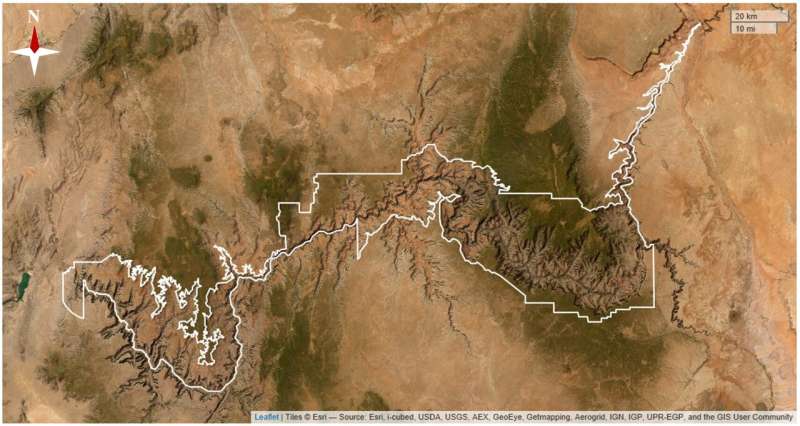August 17, 2023 report
This article has been reviewed according to Science X's editorial process and policies. Editors have highlighted the following attributes while ensuring the content's credibility:
fact-checked
peer-reviewed publication
trusted source
proofread
Models suggest Grand Canyon could see increase in heat-related illnesses due to climate change

A pair of resource stewardship researchers at the U.S. National Park Service's, Natural Resource Stewardship and Science Directorate, working with a colleague from the University of Pennsylvania, has found via modeling that it is likely more visitors to Grand Canyon National Park will experience heat-related injuries as the region warms due to climate change.
In their study, reported in PLOS ONE, Danielle Buttke, Gregor Schuurman and Brinkley Raynor used data from a variety of sources to predict the increase in heat-related illness in the coming years.
Grand Canyon National Park is one of the most visited parks in the U.S. despite its reputation as an extremely hot region. Temperatures at the bottom of the canyon average near 60°C (140°F) during the summer months and can be even hotter on trails leading down because the dark-colored walls absorb heat.
Such temperatures can lead to heat-related illnesses if visitors are not properly prepared—approximately 77 cases of such illness, on average, are reported at the park each year.
In this new effort, the researchers note that as temperatures rise in the area in the coming decades, it is likely that an increasing number of people will experience one or more heat-related symptoms, such as light-headedness, nausea, vomiting, muscle cramps, and in some cases, death.
To predict such an increase, the research team used climate models to predict temperature and humidity increases at the park. They then used statistical models to make predictions about the number of people likely to visit the park in the coming years. Combining the two models allowed them to make predictions about how many people may be at risk of heat-related illnesses up to the end of this century under two scenarios—one where temperatures increase by 3°C and the other where it increases by 5°C.
The team found that unless restrictions are put in place at the park, heat-related illnesses are likely to rise. Under the worst-case scenario, they found that the number of people experiencing such illnesses could rise to between 138 and 254 each year.
More information: Danielle E. Buttke et al, Predicting climate-change induced heat-related illness risk in Grand Canyon National Park visitors, PLOS ONE (2023). DOI: 10.1371/journal.pone.0288812
Journal information: PLoS ONE
© 2023 Science X Network




















